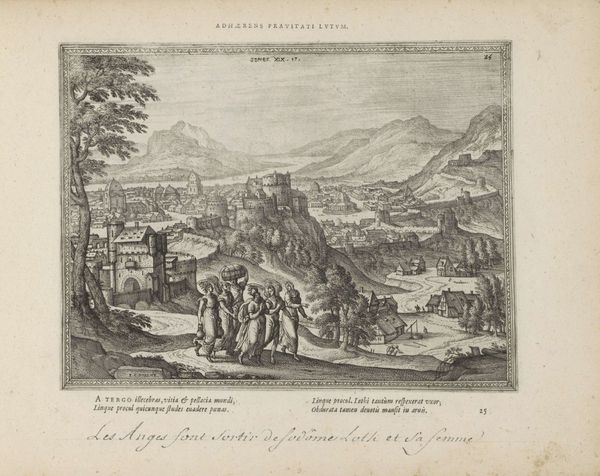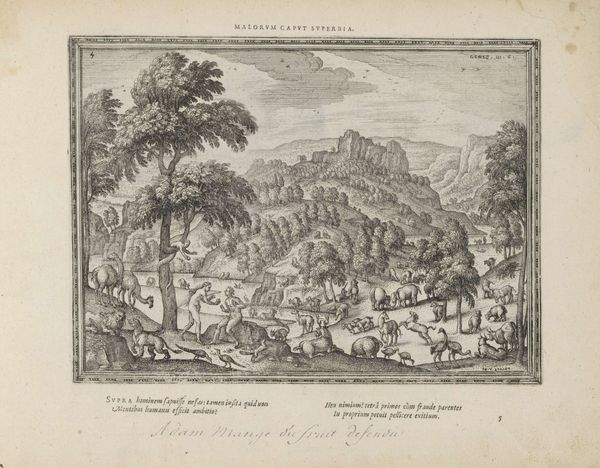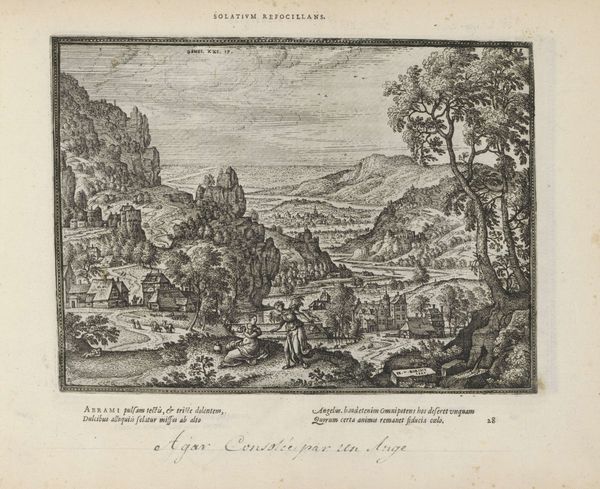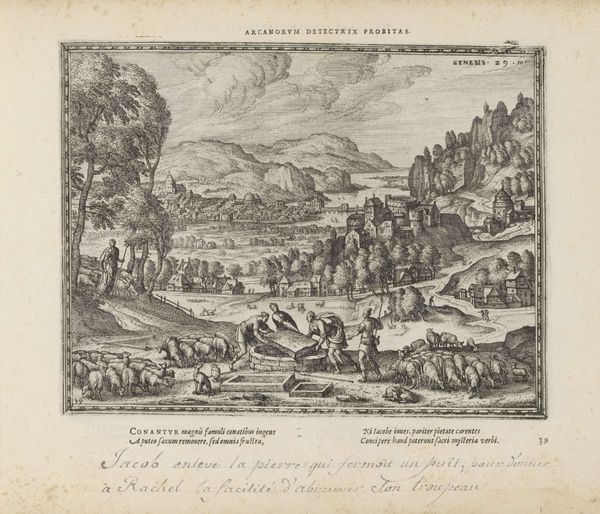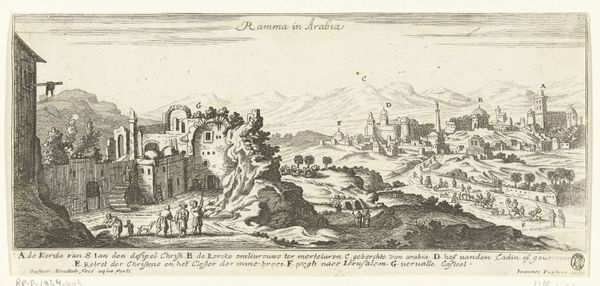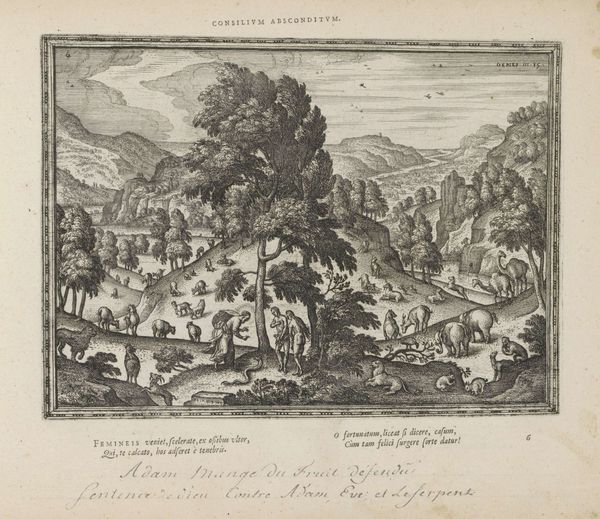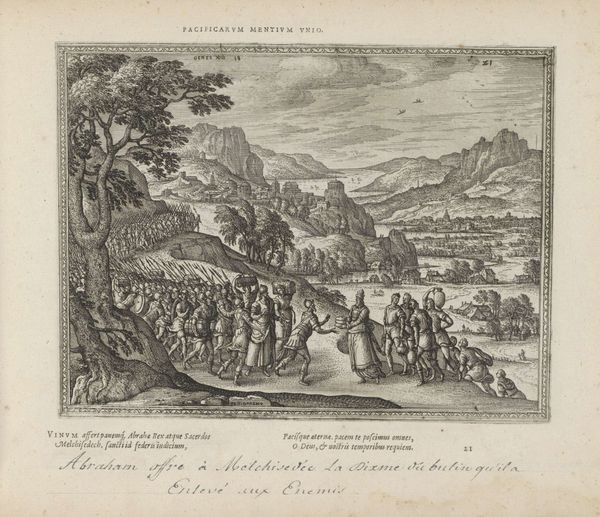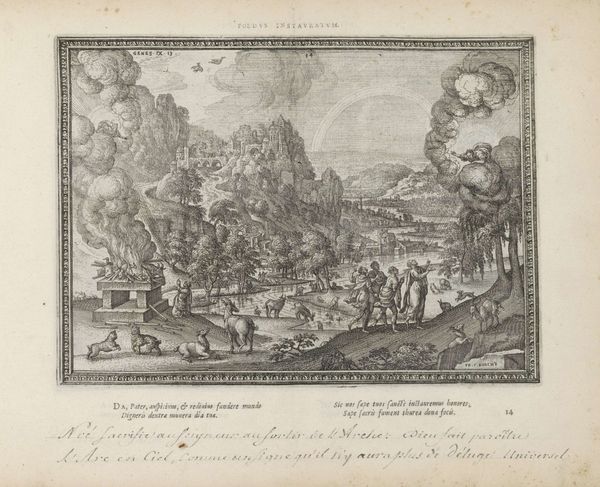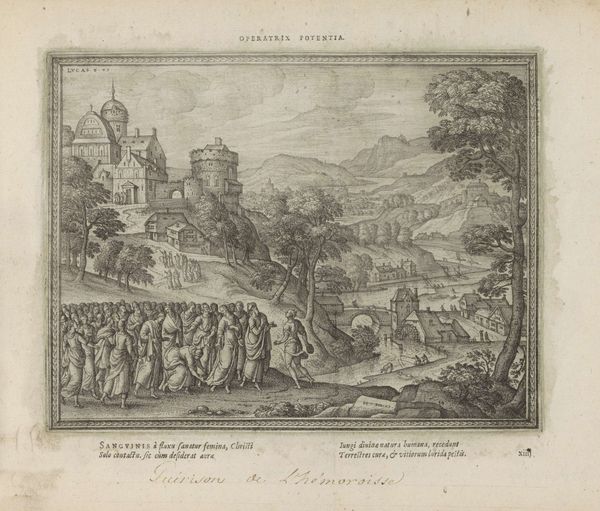
print, engraving
# print
#
landscape
#
figuration
#
history-painting
#
northern-renaissance
#
engraving
Dimensions: height 186 mm, width 249 mm
Copyright: Rijks Museum: Open Domain
Curator: This engraving, dating from between 1582 and 1613, is attributed to Pieter van der Borcht the Elder. It’s titled "Landscape with Abraham and the Three Angels." It is currently held at the Rijksmuseum. Editor: It has a quiet grandeur, don't you think? There is something very balanced about the composition that gives it a peaceful feeling. Though, viewing it through a contemporary lens, I find it problematic. I see a wealthy landowner extending hospitality, seemingly oblivious to the vast disparities of wealth in his region, which are highlighted by the differences between his lavish estate and the smaller structures in the distance. Curator: The structure of the image invites such observation; the sharp contrast between the foreground and the distant city, bisected by the river, gives way to layers of tonal depth and compositional intricacy, subtly guiding our attention to various narrative elements within the scene. Note the fine lines defining the figures against the heavier lines rendering the landscape. Editor: Yes, and that visual layering reflects the power dynamics present. Abraham, kneeling with the angels, becomes part of this privileged landscape, distinct from those who seem to live further away in what appear to be modest circumstances. What kind of social relationships does this suggest to you? Is it perhaps a commentary on obligation? Curator: One can read it that way. Yet, I focus on the delicate artistry evident in the use of engraving. The way the burin captures texture, rendering clouds, foliage, and architecture, transcends simple representation, creating a layered reading. Editor: That emphasis on detail also serves a specific ideological purpose, though. That level of focus and intricacy when illustrating Abraham’s home juxtaposed against the blurrier rendering of what lies beyond only reinforces existing power imbalances, celebrating opulent detail while simultaneously overshadowing everyone else. Curator: I recognize your interpretation of those politics; it may offer something deeper, a reflection on status... or perhaps just skillful engraving. Its form provides beauty, if one accepts a particular artistic rendering of its world. Editor: Perhaps! Appreciating the technical skill does not necessarily mean excusing the problematic representation of class and privilege during that era. I find that the piece continues to engage and challenge us even now, forcing a dialogue between then and now.
Comments
No comments
Be the first to comment and join the conversation on the ultimate creative platform.
